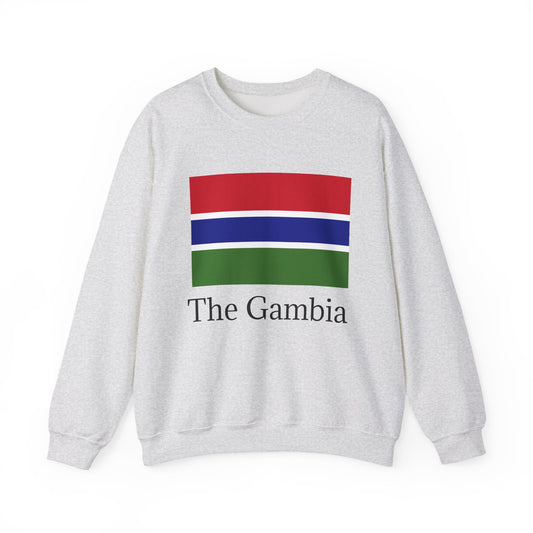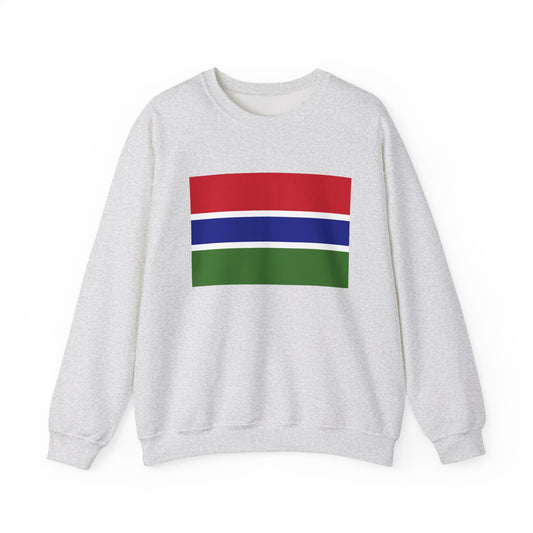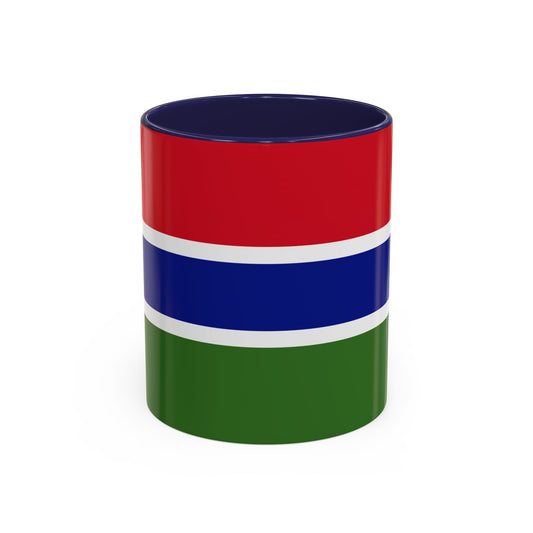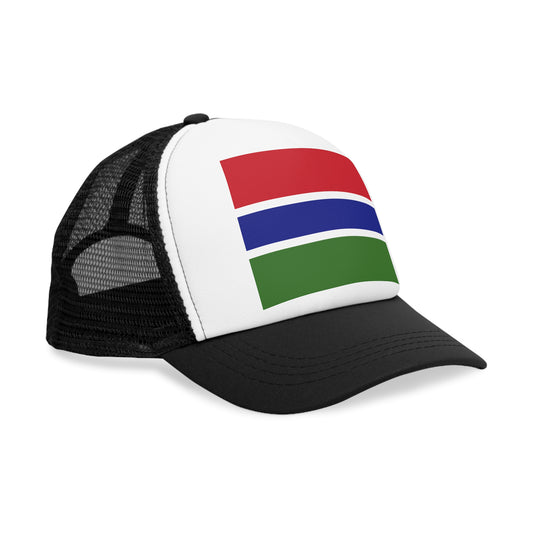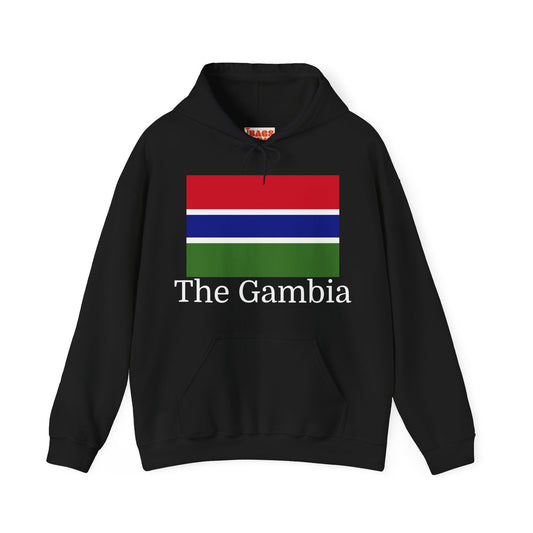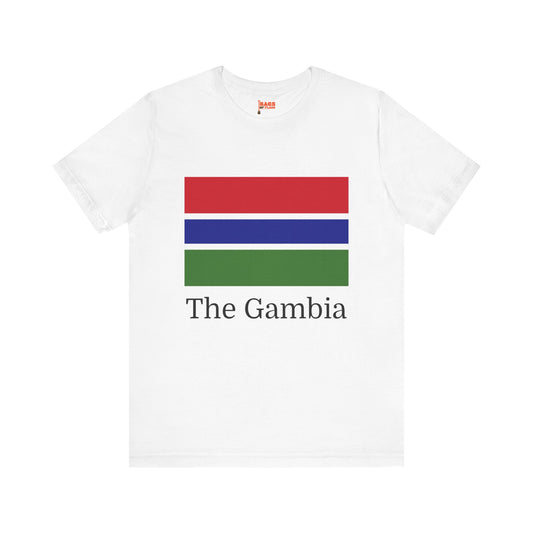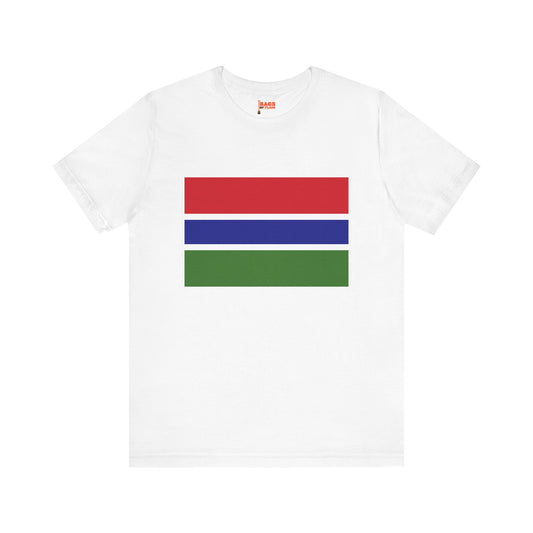-
The Gambia Pillow
Regular price $22.65 USDRegular priceUnit price / per -
The Gambia Backpack
Regular price $59.79 USDRegular priceUnit price / per -
The Gambia Leather Patch Hat
Regular price $18.85 USDRegular priceUnit price / per -
The Gambia Sweatshirt
Regular price $34.15 USDRegular priceUnit price / per -
The Gambia Flag Sweatshirt
Regular price $34.15 USDRegular priceUnit price / per -
The Gambia Mug
Regular price $11.65 USDRegular priceUnit price / per -
The Gambia Trucker Cap
Regular price $14.90 USDRegular priceUnit price / per -
The Gambia Hoodies
Regular price $34.40 USDRegular priceUnit price / per -
The Gambia T-shirts
Regular price $22.79 USDRegular priceUnit price / per -
The Gambia Flag Hoodies
Regular price $34.40 USDRegular priceUnit price / per -
The Gambia Flag on T-shirt
Regular price $22.79 USDRegular priceUnit price / per
Collection: The Gambia
The Gambia flag symbolizes the national pride and identity of the West African country. Adopted in 1965, the flag holds deep historical significance and represents the values and aspirations of the Gambian people. We will explore the design, colors, history, symbolism, and protocols associated with the flag of The Gambia.
Overview of The Gambia Flag Design and Colors

The national flag of The Gambia presents a striking and colorful arrangement consisting of three horizontal stripes of red, blue, and green. These vibrant stripes are separated by thin white lines, adding a distinctive contrast that enhances the flag's visual appeal. The central feature of the flag is a horizontal blue stripe, symbolizing the vital Gambia River that flows through the heart of the country, acting as a lifeline for its people and a cornerstone of its geography.
Above this blue stripe lies a red band, symbolic of the sun's warmth and the country's independence struggle. In contrast, the bottom green stripe mirrors the fertile lands that underscore The Gambia's rich agricultural heritage. This harmonious blend of colors reflects the nation's physical characteristics and historical journey. It conveys a message of hope and unity, encapsulating the essence of The Gambian spirit and its aspirations for peace and prosperity.
Historical Context of The Gambia Flag
The flag of The Gambia was officially adopted on February 18, 1965, marking a significant milestone as the nation emerged as an independent country free from British colonial rule. This date is not just a reflection of the country's newfound sovereignty but also symbolizes the culmination of a long and arduous struggle for independence. The choice of the flag's design resulted from a national competition to find a symbol that would encapsulate the Gambian people's aspirations, cultural heritage, and unity. The new flag needed to foster a sense of national pride and represent a departure from colonial identity, establishing a unique Gambian identity on the global stage.
Over the years, the flag has remained unchanged, a testament to its enduring values and ideals. Its adoption coincided with a period of significant political and social transformation across Africa, as many countries gained independence and sought to assert their identity and autonomy on the world stage. The Gambia's flag thus became a part of a broader tapestry of African nationhood and freedom, a symbol not only of its own national story but also of the collective aspirations of the continent for peace, unity, and self-determination.
Symbolism Behind The Gambia Flag

The colors and design of The Gambia flag are rich with meaning, each carefully chosen to represent the nation's core values and geographical characteristics. The red stripe symbolizes the sun's energy and the country's savannas, reflecting the Gambian people's vigor and endurance in their fight for independence. The blue stripe mirrors the Gambia River, the nation's most prominent geographical feature, symbolizing the lifeblood of the country that sustains its people and nurtures its agriculture.
This blue band also stands for unity and peace, emphasizing the importance of these values in national cohesion and development. The green stripe at the bottom represents the fertile land, a nod to agriculture's pivotal role in the Gambian economy and the abundance the earth provides. Surrounded by thin white lines, these colors signify purity and transparency in the nation's aspirations and dealings. Together, these elements embody The Gambia's hope, resilience, and unity, offering a visual testament to its history, struggles, and aspirations for a prosperous future.
Current Relevance of The Gambia Flag
In today’s Gambian society, the national flag continues to play a significant role, prominently featured at a wide array of public events, from Independence Day parades to state functions and educational celebrations. It symbolizes the unity and resolve of the Gambian people, standing as a beacon of national identity amidst the global community. Moreover, the flag is deeply integrated into military honors and ceremonies, where it is displayed with solemn respect, highlighting the sacrifices made for the nation's freedom and sovereignty.
Interestingly, the flag has also found itself at the center of societal discussions and debates, reflecting the evolving narrative of national identity and the values the country upholds. These discussions often revolve around the flag's ability to represent all facets of Gambian society and its role in shaping a cohesive national narrative in the face of contemporary challenges. Such debates underscore the dynamic nature of national symbols and their ability to adapt and resonate with changing societal values and aspirations.
Despite these discussions, the flag remains a unifying symbol for Gambians, emblematic of the country's enduring spirit and collective ambition. Its presence at international events underscores The Gambia's sovereignty and active participation in the global arena, promoting the country's culture, values, and aspirations on the world stage.
Additional Facts About The Gambia Flag
- The flag must always be displayed with utmost care to maintain its dignity. This includes ensuring it is never allowed to fall or lie on the ground, nor should it be used inappropriately for commercial purposes or defaced in any way.
- When displayed alongside flags of other nations, The Gambia flag should be positioned to its right to honor its sovereignty, with all flags at equal height to symbolize international equality.
- During official events, there are precise guidelines for hoisting the flag - it is to be raised promptly at the beginning of the ceremony and lowered slowly and respectfully at its conclusion, ensuring the flag's symbolic value is honored.
- Special attention is given to the flag's placement during national periods of mourning, where it is flown at half-mast as a gesture of the country's collective sorrow and respect for the deceased.
- There exists a protocol for folding the flag during ceremonial events, which involves careful handling to ensure its form and dignity are preserved, symbolizing the respect owed to the nation's emblem.








